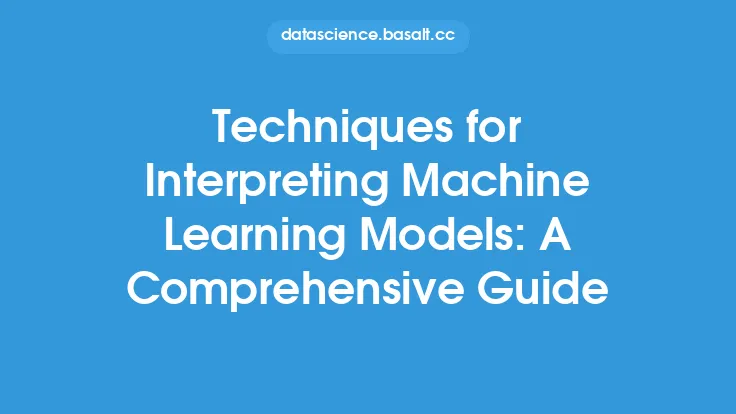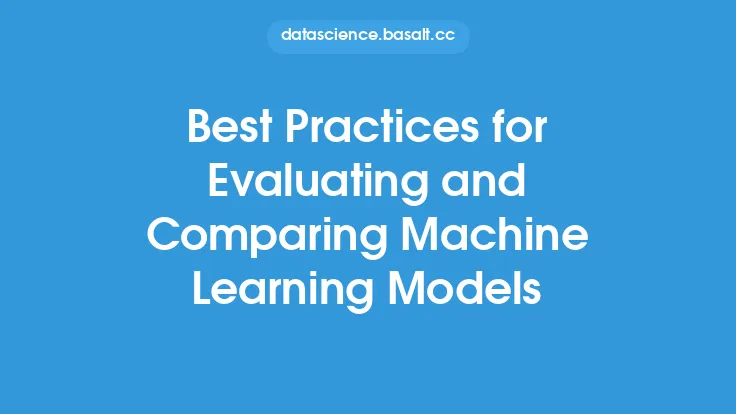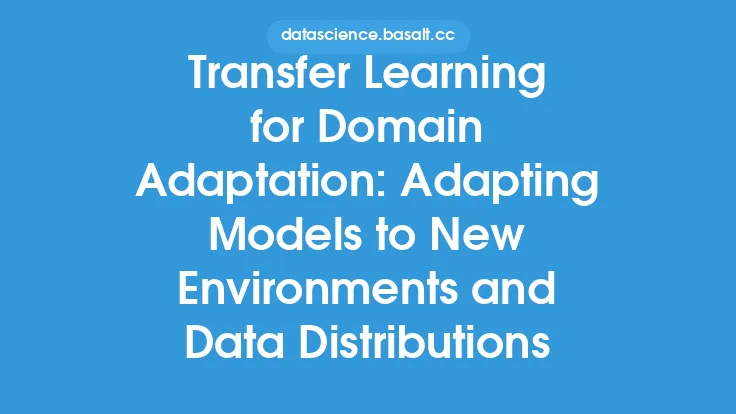Containerization has become a crucial aspect of machine learning model deployment, allowing developers to package their models and dependencies into a single container that can be easily deployed and managed across different environments. In this article, we will delve into the world of containerization for machine learning models, focusing on Docker and Kubernetes, two of the most popular containerization tools.
Introduction to Containerization
Containerization is a lightweight and portable way to deploy applications, including machine learning models. It allows developers to package their code, dependencies, and configurations into a single container that can be run consistently across different environments, such as development, testing, and production. Containerization provides a consistent and reliable way to deploy models, ensuring that they work as expected, regardless of the environment they are deployed in.
Docker Fundamentals
Docker is a popular containerization platform that allows developers to create, deploy, and manage containers. Docker provides a simple and efficient way to package machine learning models and their dependencies into a single container. Docker containers are lightweight and portable, making it easy to deploy models across different environments. Docker also provides a range of tools and features, such as Docker Hub, which allows developers to share and manage their containers.
To get started with Docker, developers need to create a Dockerfile, which is a text file that contains instructions for building a Docker image. The Dockerfile specifies the base image, copies files, installs dependencies, and sets environment variables. Once the Dockerfile is created, developers can build a Docker image using the `docker build` command. The resulting image can be pushed to Docker Hub or other container registries, making it easy to share and deploy.
Containerizing Machine Learning Models with Docker
Containerizing machine learning models with Docker involves packaging the model, its dependencies, and configurations into a single container. This can be done by creating a Dockerfile that specifies the base image, copies the model and its dependencies, and sets environment variables. For example, a Dockerfile for a Python-based machine learning model might look like this:
FROM python:3.9-slim
# Set working directory to /app
WORKDIR /app
# Copy requirements file
COPY requirements.txt .
# Install dependencies
RUN pip install -r requirements.txt
# Copy model and data
COPY model.py .
COPY data.csv .
# Expose port
EXPOSE 8000
# Run command
CMD ["python", "model.py"]
This Dockerfile specifies a base image of Python 3.9, sets the working directory to `/app`, copies the `requirements.txt` file, installs dependencies using `pip`, copies the model and data, exposes port 8000, and sets the run command to `python model.py`.
Kubernetes Fundamentals
Kubernetes is a container orchestration platform that allows developers to deploy, manage, and scale containers. Kubernetes provides a range of features, such as automated deployment, scaling, and management of containers. Kubernetes also provides a range of tools and features, such as Kubernetes Dashboard, which allows developers to manage and monitor their containers.
To get started with Kubernetes, developers need to create a Kubernetes deployment configuration file, which specifies the container image, port, and other settings. For example, a Kubernetes deployment configuration file for a machine learning model might look like this:
apiVersion: apps/v1
kind: Deployment
metadata:
name: ml-model
spec:
replicas: 3
selector:
matchLabels:
app: ml-model
template:
metadata:
labels:
app: ml-model
spec:
containers:
- name: ml-model
image: ml-model:latest
ports:
- containerPort: 8000
This configuration file specifies a deployment named `ml-model`, with three replicas, and a container named `ml-model` that uses the `ml-model:latest` image and exposes port 8000.
Deploying Machine Learning Models with Kubernetes
Deploying machine learning models with Kubernetes involves creating a Kubernetes deployment configuration file that specifies the container image, port, and other settings. Once the configuration file is created, developers can apply it to a Kubernetes cluster using the `kubectl apply` command. Kubernetes will then deploy the container and manage its lifecycle, including scaling, updating, and monitoring.
Kubernetes provides a range of benefits for deploying machine learning models, including automated deployment, scaling, and management of containers. Kubernetes also provides a range of tools and features, such as Kubernetes Dashboard, which allows developers to manage and monitor their containers.
Best Practices for Containerizing Machine Learning Models
When containerizing machine learning models, there are several best practices to keep in mind. First, it's essential to keep the container image small and lightweight, to reduce the time it takes to deploy and update the model. This can be done by using a minimal base image, and by avoiding unnecessary dependencies.
Second, it's essential to use a consistent and reliable way to manage dependencies, such as using a `requirements.txt` file for Python-based models. This ensures that the model and its dependencies are consistent across different environments.
Third, it's essential to use a consistent and reliable way to configure the model, such as using environment variables or a configuration file. This ensures that the model is configured correctly, regardless of the environment it is deployed in.
Finally, it's essential to monitor and log the model, to ensure that it is working as expected, and to detect any issues or errors. This can be done using tools such as Kubernetes Dashboard, or by using a logging framework such as Logstash or Splunk.
Conclusion
Containerization is a crucial aspect of machine learning model deployment, allowing developers to package their models and dependencies into a single container that can be easily deployed and managed across different environments. Docker and Kubernetes are two of the most popular containerization tools, providing a range of features and benefits for deploying machine learning models. By following best practices, such as keeping the container image small and lightweight, using a consistent and reliable way to manage dependencies, and monitoring and logging the model, developers can ensure that their machine learning models are deployed smoothly and reliably.





